'Un-thirsty' is a term we could all embrace in gardening: it is used by Flora Grubb when she describes the vibrant plants for which she has a passion. Gardening with minimal water is what her nursery in San Francisco has become famous for, and the small city garden that wraps around Flora’s own house in Berkeley, California, is a compelling example of her outlook.
“We don’t love the word ‘dry’; we aren’t trying to make gardens that look dry,” she explains. “We’re trying to make gardens that look ‘juicy’ but don’t need much water.” The philosophy of her nursery is perfectly reflected in her garden – the plants need little water but create a lush feel.
IN BRIEF
What A small town garden, featuring plants that are adapted to drought.
Where Berkeley, northern California.
Soil Brought-in topsoil, improved with volcanic rock.
Size 15m x 30m.
Climate Foggy, little rainfall, no hard frosts.
Hardiness zone USDA 10b.
“There are some very traditional things about my garden, but what is not traditional is the amount of water it uses,” she says. The fog of the Bay Area carries moisture in the air, but little rainfall; it doesn’t rain for seven months in a year. The climate is “coastally influenced cool summer Mediterranean”; in other words, says Flora, “plants love it”.
Flora is drawn to plants that suit a dry climate, wherever they come from. Her nursery, backed by a 40-acre wholesale operation in Southern California, has been responsible for several introductions of climate-adapted plants sourced from around the globe.
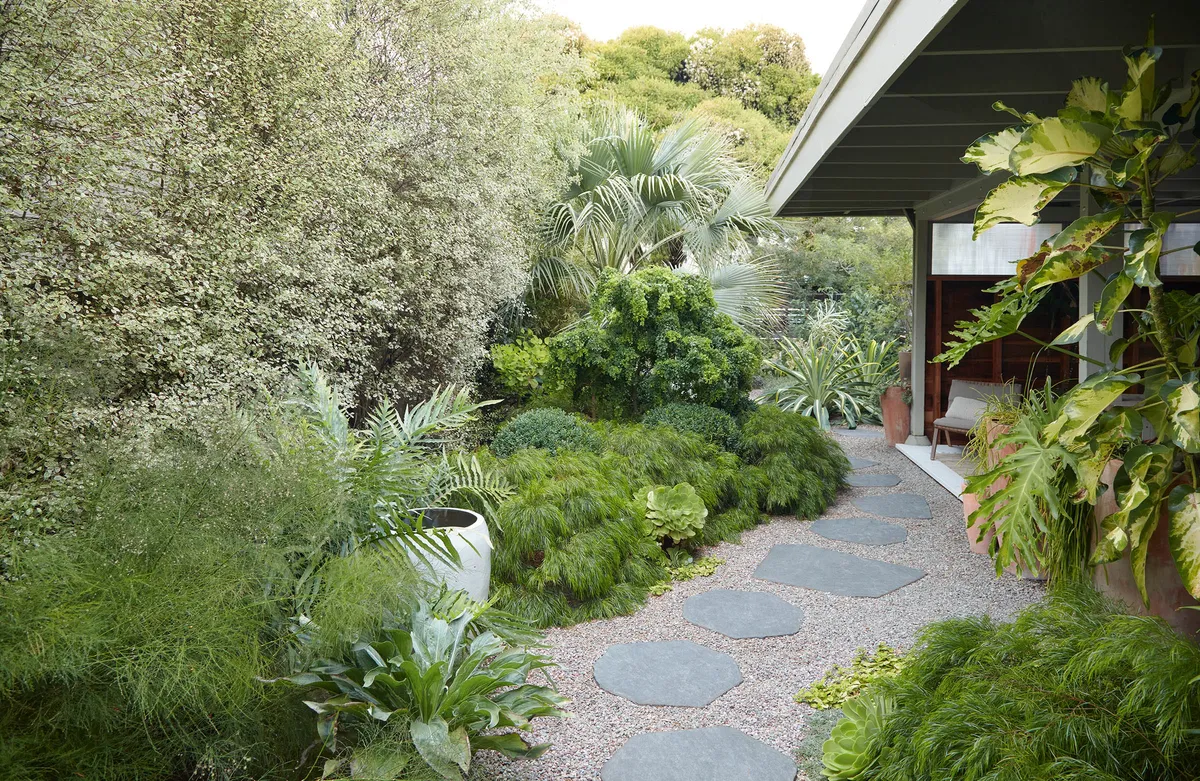
Palms are a speciality, and Flora is particularly fond of her own Brahea armata ‘Clara’, from Sonora state in Mexico, which is better suited to cooler conditions than the straight species. Robinia pseudoacacia ‘Twisty Baby’ will continue to distract the eye away from the street entrance, after the palm has grown taller. Pittosporum tenuifolium ‘Silver Sheen’ creates a shimmering screen in front of the perimeter fence.
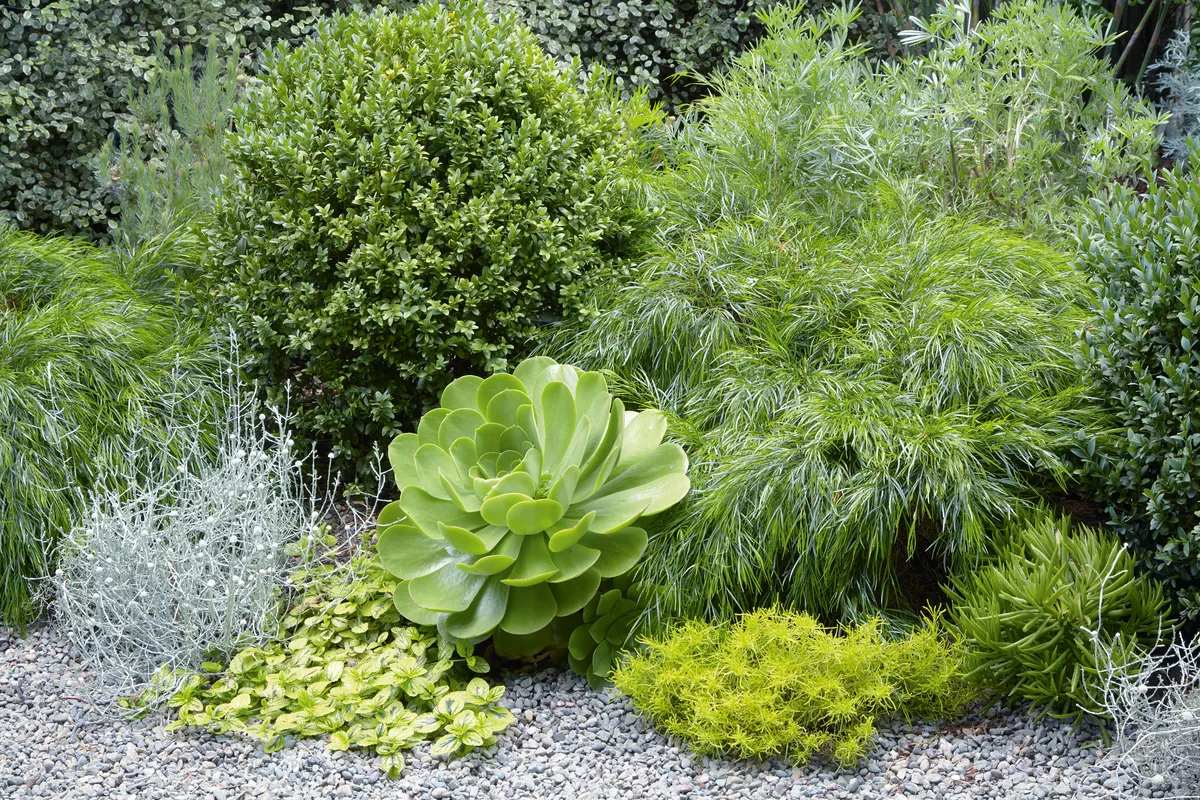
Around the edges of Acacia cognata ‘Mini Cog’, Aeonium ‘Mint Saucer’ draws attention to smaller players, including silvery Leucophyta brownii, Ceanothus griseus var. horizontalis ‘Diamond Heights’, Santolina rosmarinifolia ‘Lemon Fizz’ and Peperomia ferreyrae.
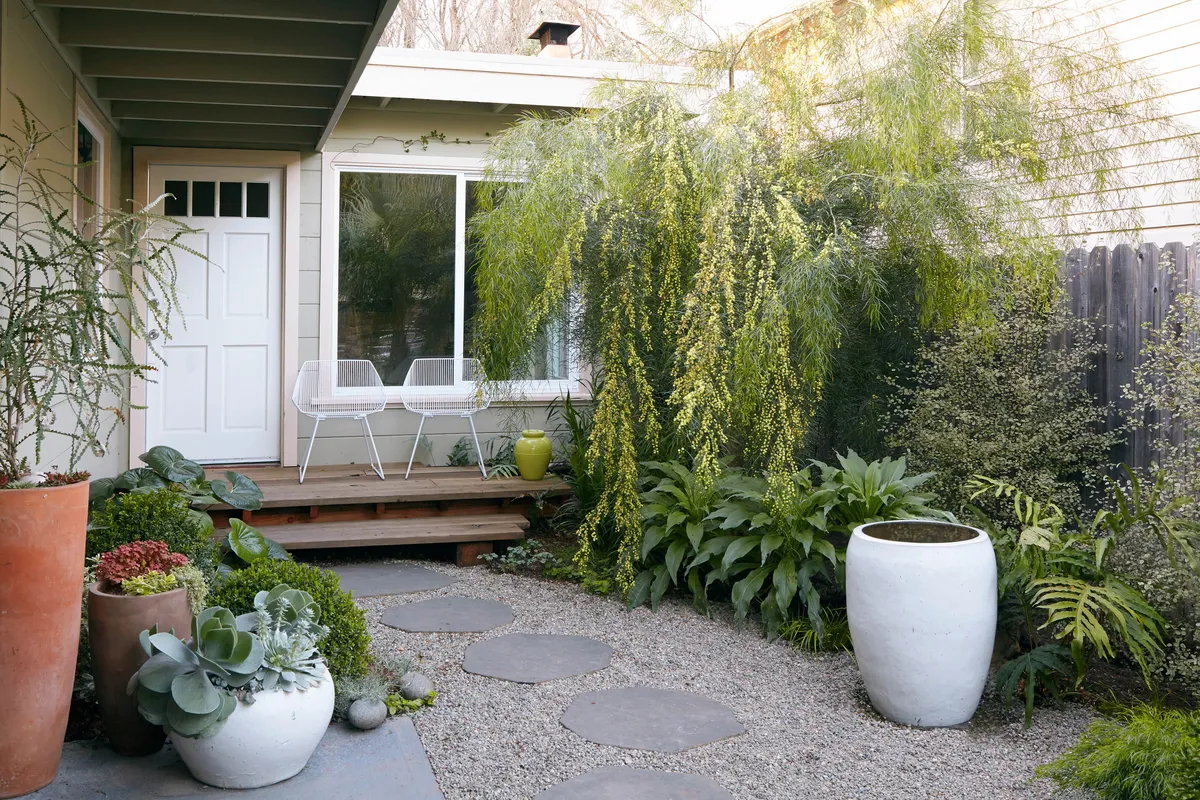
One of the key structural plants Flora introduced when she began the garden six years ago was the weeping shrub Acacia cognata, which she has used to frame the entrance. Other plants are grown in planters so Flora can move them around, although the tall white pot on the right is water feature with a gentle fountain. She happily plunges pots straight into larger ceramic vessels so that she can experiment with one of her main motivations: texture.
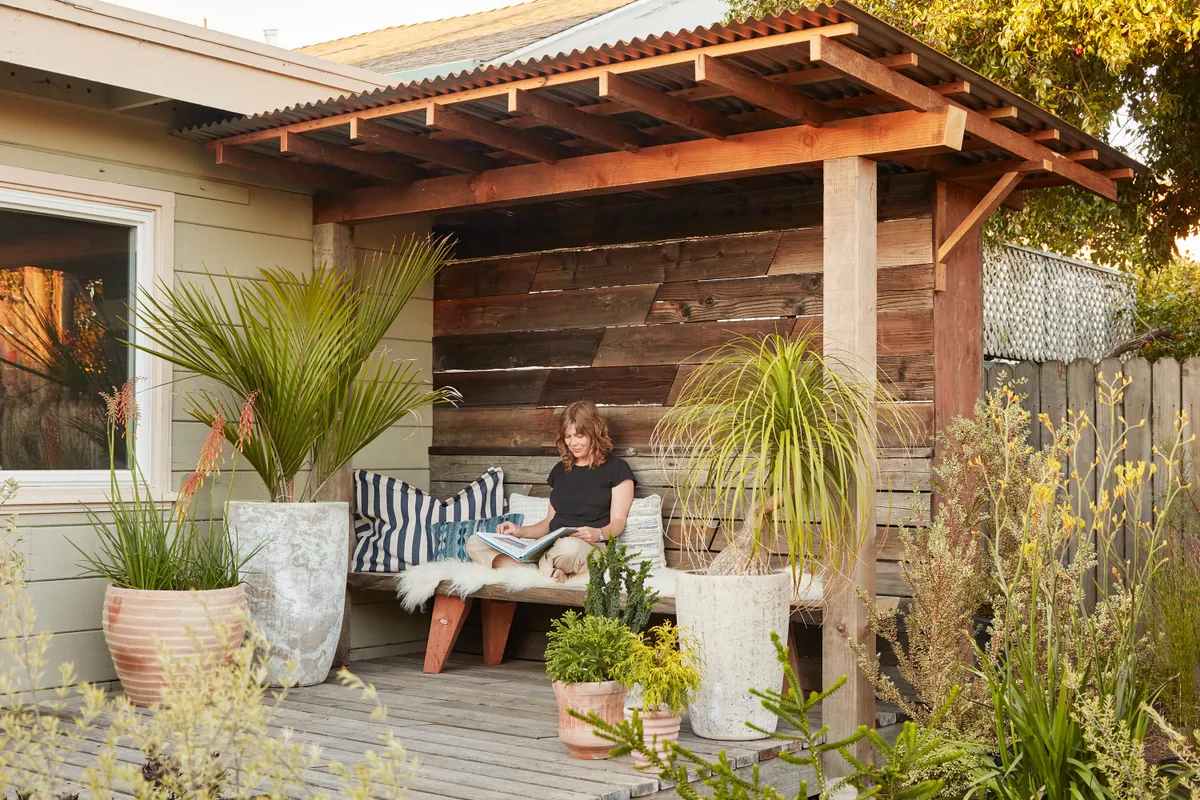
The covered seat to the side of the house is perfect for a mild winter day,” says Flora. To her right is the palm Rhopalostylis baueri and Kniphofia thomsonii in a terracotta pot that complements its flowers. On her right is a Beaucarnea recurvata.
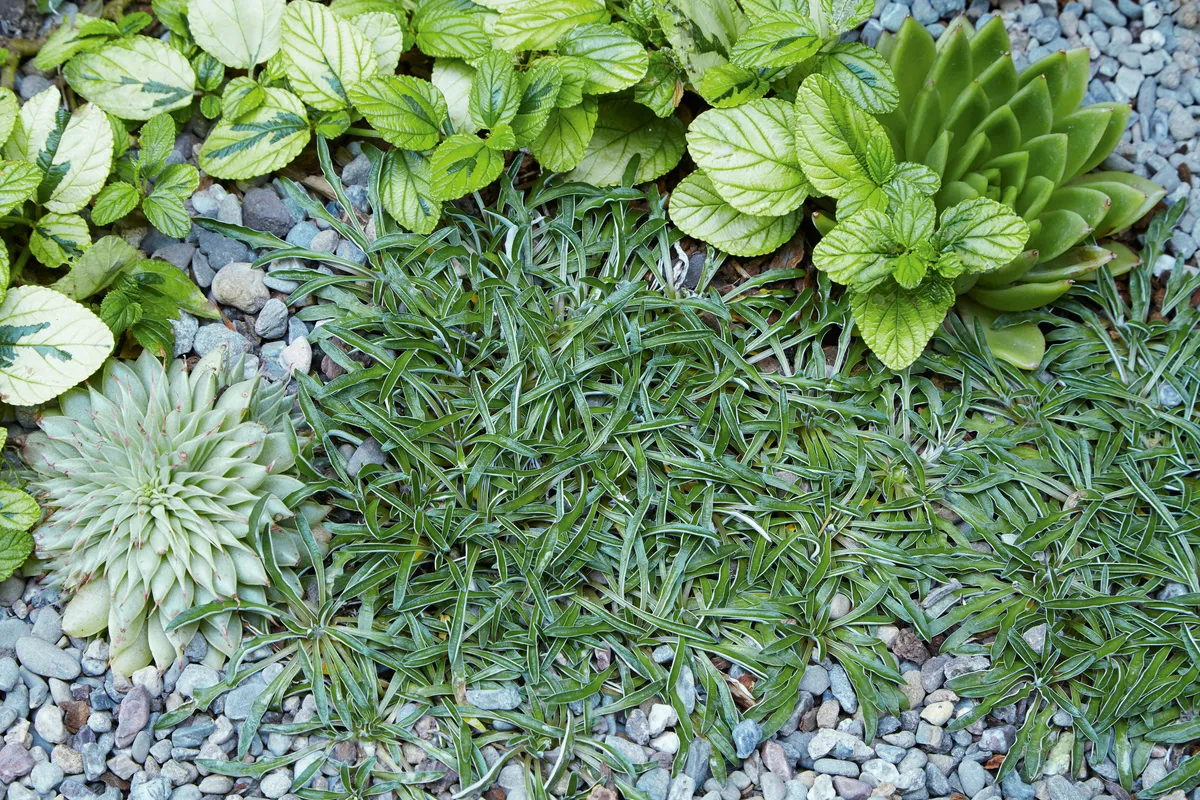
Non-natives anchor the garden, but natives are here too, such as gravel-hugging Ceanothus griseus var. horizontalis ‘Diamond Heights’, is a drought-tolerant evergreen that is native to San Francisco specifically. It is a good mingler, shown here with Dymondia margaretae from South Africa. “Native plants should be part of all gardens of any size in California,” says Flora, while maintaining that a multicultural tapestry brings life to a garden.
“With all the weird stuff going on in the world, it’s actually a wonderful time to be a gardener,” she says, while acknowledging that it is the nurseryman’s responsibility to monitor exotics and prevent their sale if they are rampant, “no matter how much customers ask for them”.
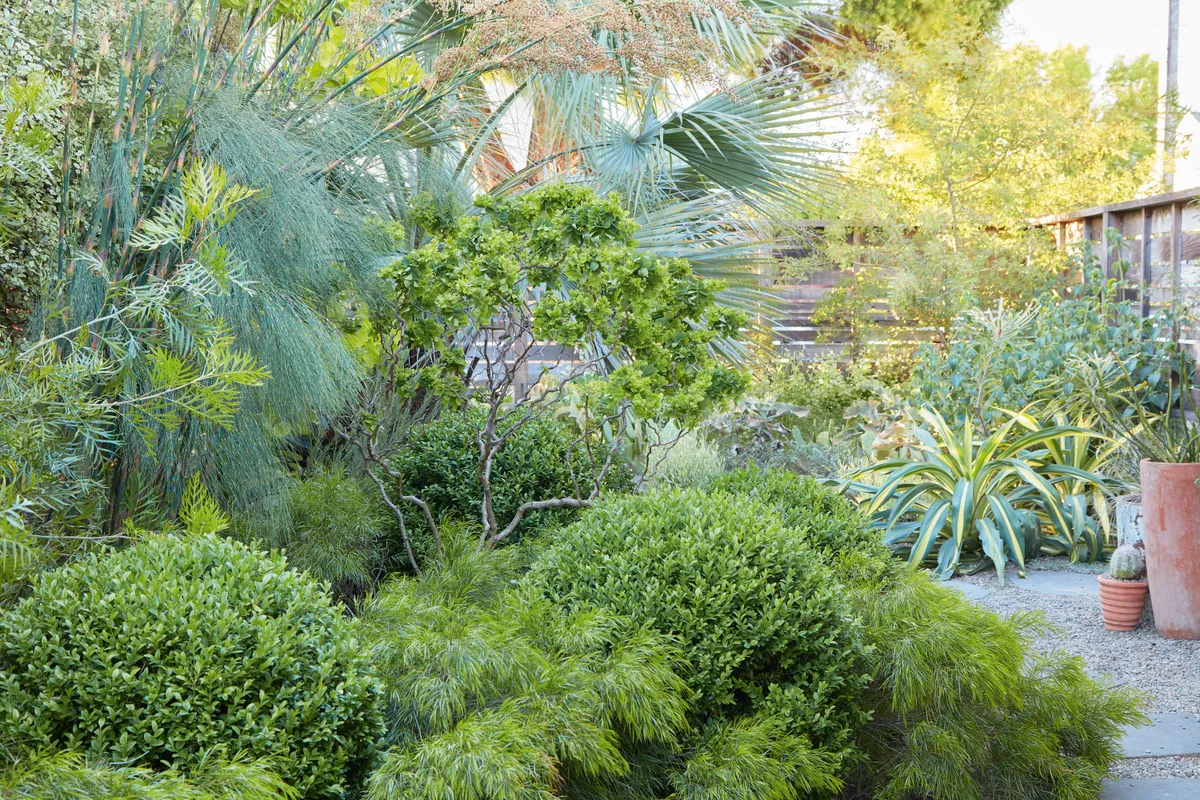
Flowers in this garden are fairly few and far between. “I do like flowers, but when a garden is filled with them, it is often too much for me to find pleasurable,” she says. “Whereas you can have all the textures, and never think: ‘Please, make it stop’.” When her exotics do flower, amid all the greenery, it can be a genuinely spectacular event.
This year, her yellow-striped Beschorneria yuccoides Flamingo Glow (=‘Besys’) (shown above, to the right of the path) sent out an enormous, luminous pink bloom stalk. “The flowering process of that plant was outlandish,” Flora recalls. “It was such a pleasure.”
USEFUL INFORMATION
Flora Grubb Gardens, 1634 Jerrold Ave, San Francisco, CA 94124, USA.
Open Wednesday to Sunday, 11am - 6pm.